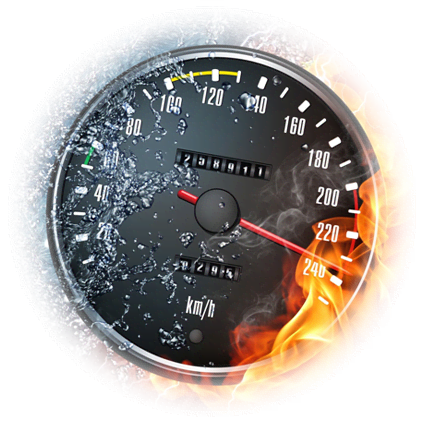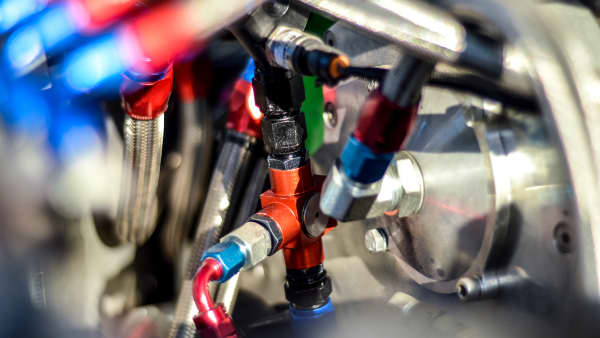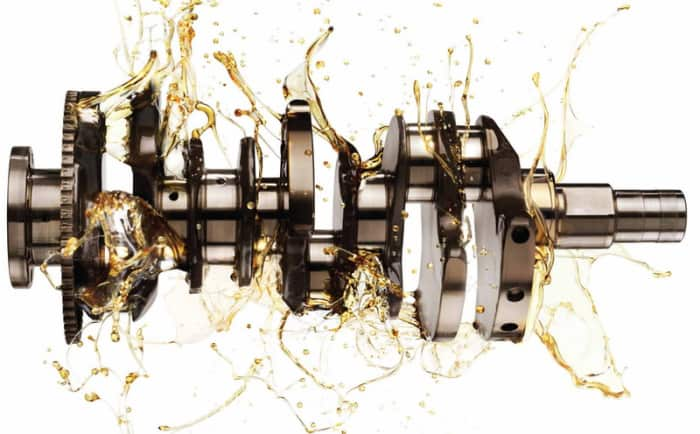how to prepare for
an engine dyno
Our Engine Dyno was built for superior performance. It’s built on the same platform that GM uses for their Nascar program. At its heart is a Go Power Dual Rotor water absorber that can test up to 2,400 ft. Lbs. of torque at 10,000 rpm.
Why dyno test an engine?
It is easier and cheaper to test and tune an engine on the dyno than on the road/track. In the long-run, the money spent will pay off as you optimize your engine configuration and identify any problems before they become a catastrophic failure.
Engine dyno testing allows you to:
- Safely break-in a new engine.
- Optimize your torque, horsepower, and air-fuel ratio.
- Set your ignition timing, oil pressure, carb, lash and cam timing and test supporting systems.
- Detect leaks, vibration, noise, and test the effectiveness of cooling, lubrication, and controllability.
- Compare engine output with different engine components.
Engine dyno checklist
1. Set Testing goals
Consider clearly why you are putting your engine on the dyno. What do you hope to learn? What are the key elements that you wish to glean from the test? Write down some clear and unambiguous test goals and be sure to discuss them with our technician. Your goal may be to break-in a new engine build and check for noise & vibration, set the timing and jetting for a specific octane, test the effectiveness of cooling, etc. Or you may want to spend a day or more testing and tuning to compare different camshafts, carbs, headers, air induction systems, etc. Or, you may just want to see what she can do!
Whatever your reason for testing it is easier and cheaper to test and tune an engine on the dyno than on the road/track. In the long-run, the money spent will pay off as you optimize your engine configuration and identify any problems before they become a catastrophic failure.
2. Prepare the engine for transporting
The cooling system on a newly-built engine will have a lot of trapped air. This will cause wild temperature gauge readings on the dyno and can lead to water pump cavitation. To help avoid this situation, fill the cooling system up with a 50/50 mix of quality coolant and water a few hours before transporting the engine. Leave the radiator cap off during this time to help purge the system. Install a lever-vent radiator cap and leave it open during transportation to further purge any air out of the system.
Tape or push a rag into the exhaust ports and carb flange prior to transporting. A simple method for transporting an engine block is to place it on an old tire and secure it in place with tie-down straps. We recommend that you place it as far forward as possible in the event of any sudden emergency breaking.
3. Engine specs
You should know the precise build specification of your engine before beginning the test. Without full records of the build, including cam timing, ignition timing, fuel and oil used, compression ratio, you will not be able to replicate test results if you wish to do a test in the future.
By providing full specs for the engine and transmission, the tuning process will be more efficient and the tuning will deliver better results. We have provided a specification checklist that we suggest you complete and submit prior to your appointment.
4. Test components
Since it is much simpler to diagnose and tune an engine sitting on a dyno than it is after it has been installed in a chassis you may want to take advantage of this opportunity to test multiple components and combinations. For example, if you’re trying to find the carb that will deliver the best performance, bring as many as you can and test them all*. You can do this with multiple system components such as oil pumps, cams, valve springs, fuel system, and air intake. These components can all have a significant impact on engine performance and tuning. It will be easier to swap-out parts while the engine is on the dyno and you will have better tuning results.
*Important: don’t forget to bring the mounting hardware for these parts.
5. Headers & exhaust
Headers constitute a major factor in your engine’s exhaust aspiration; therefore, it is highly recommended that testing is conducted with the headers you intend to run on the engine. For testing purposes, we provide mounting plates equipped with EGT probes that we will install between the cylinder heads and your headers.
If you have not yet selected headers for your engine we can provide a set for testing purposes; however, performance may vary significantly between header types. If you don’t have headers and want to use ours, please notify us in advance so we can ensure we have the proper tube size available.
As you prepare for an engine dyno test, consider that our setup can support full exhaust systems. Testing with your exhaust system will deliver a more accurate tune and will better unleash your engine’s full potential.
6. Spare parts
Ensure that your engine components are in good working order. If you have spare engine parts available, it is a good idea to bring them along. In the event of a component failure during testing, having a spare on hand will avoid wasting your scheduled appointment.
Bring at least one extra spark plug, or preferably, an extra set.
7. Fuel & lubricants
Bring fuel of the same octane you will be running. Since AFR will vary between different octanes, if you use different fuels for street and track, bring both.
If you will be breaking in your engine on the dyno bring enough oil for three oil changes.
8. Tools
We have available for your use, at no extra charge, a complete set of Snap-on mechanic’s tools. We are also able to provide specialized tools such as a timing gun, valve feeler gauges, spark plug reader, precision vernier calipers, and a carb jet drain funnel. We also have 4150-4500 and 4500-4150 adapter carb flanges.
If you require other specialized tools please call ahead to check for availability.
If you have any questions that we haven’t covered here about how to prepare for an engine dyno test, don’t hesitate to call us at 613-795-2779 between 8:30 am and 7:00 pm EST on Monday to Saturday, and between 10:00 am and 5:00 pm on Sunday. Or, send us an email at internationaldyno@gmail.com
share this page
 Marc Chartrand
Marc Chartrand





